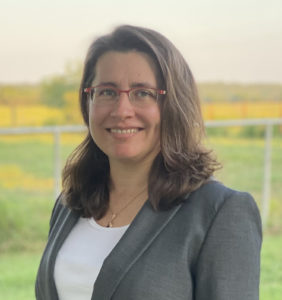
Assistant Professor of Finance
Texas Christian University
v.traweek@tcu.edu
Interests: financial intermediation, household finance, corporate finance
Publications:
Traweek, Virginia, and Malcolm Wardlaw. “Freedman’s Savings and Trust Bank Passbook and Dividend Repayment Records.” Journal of Slavery and Data Preservation 3, no. 1 (2022). https://doi.org/10.25971/7jn5-5×58.
Traweek, Virginia, and Malcolm Wardlaw. “Racial violence, political representation, and the threat to banks as open access institutions.” Journal of Banking and Finance, Volume 172, March 2025, 107382. https://www.sciencedirect.com/science/article/abs/pii/S0378426625000032.
Working Papers:
“Societal Inequality and Financial Market Participation: Evidence from the Freedman’s Savings Bank“ (with Malcolm Wardlaw)
Conditionally Accepted, Review of Financial Studies
We study depositor behavior and capital flight using data from the Freedman’s Savings Bank, a bank established after the U.S. Civil War to support formerly enslaved individuals. White depositors, who generally had better access to financial information, begin providing significant funding as interest terms are enhanced. They respond faster to post-panic stabilization efforts and negative bank-specific information, and are twice as likely to close accounts prior to failure, passing expected losses to Black depositors, who were the bank’s primary philanthropic target. Our results show how demand deposit funding of bank-like institutions can create systemic disadvantages for less experienced borrowers.
Media Coverage:
Michigan Ross Faculty News, November 2021
Conversations with Kenyatta, November 2021
“A Tale of Two Cities: The Rural-Urban Divide in Banking”
Bank branches in counties with a high rural population offer certificate of deposit (CD) rates of up to 22% higher than banks in counties that are more urban. Although bank size does explain some of this result, controlling for large bank results in a 5.6% to 8% rural CD premium. I show that higher CD rates in rural counties are not a function of credit quality of rural borrowers and are not explained by rural CD depositor impatience or rural bank capital constraints. Overall, my findings highlight an important difference in the way rural and urban depositors interact with the financial system.
“Shadows on Main Street: Mapping America’s Financial Architecture from the Yellow Pages of the 20th Century” (coauthored with Amiyatosh Purnanandam and Taylor Begley)
We construct a novel and comprehensive database of the branches of all financial services providers, including banks and nonbank financial institutions, at the county level over 1920-2000 from Yellow Pages published in Indiana, Michigan, and Ohio. We find that about one-third of these branches are shadow banks, i.e., non-regulated entities, and that there is strong county-specific persistence in both the number of branches and the share of shadow banks over time. We examine the statistical and economic implications of these findings for extant empirical literature on the effect of finance on real outcomes, which mostly focuses on easily-measured regulated institutions. Ignoring shadow banks in these analyses creates a non-classical measurement error since shadow banks evolve as a complement to regulated institutions. Using banks alone as a proxy for financial development can understate the true effect by as much as 50% or overstate the true effect by as much as 80%, depending on the empirical application. Routine empirical choices such as whether to use the number of branches or their log-transformed values in the regression analysis create large differences in the direction and extent of bias. We provide suggestions for correcting for these biases in future empirical studies.